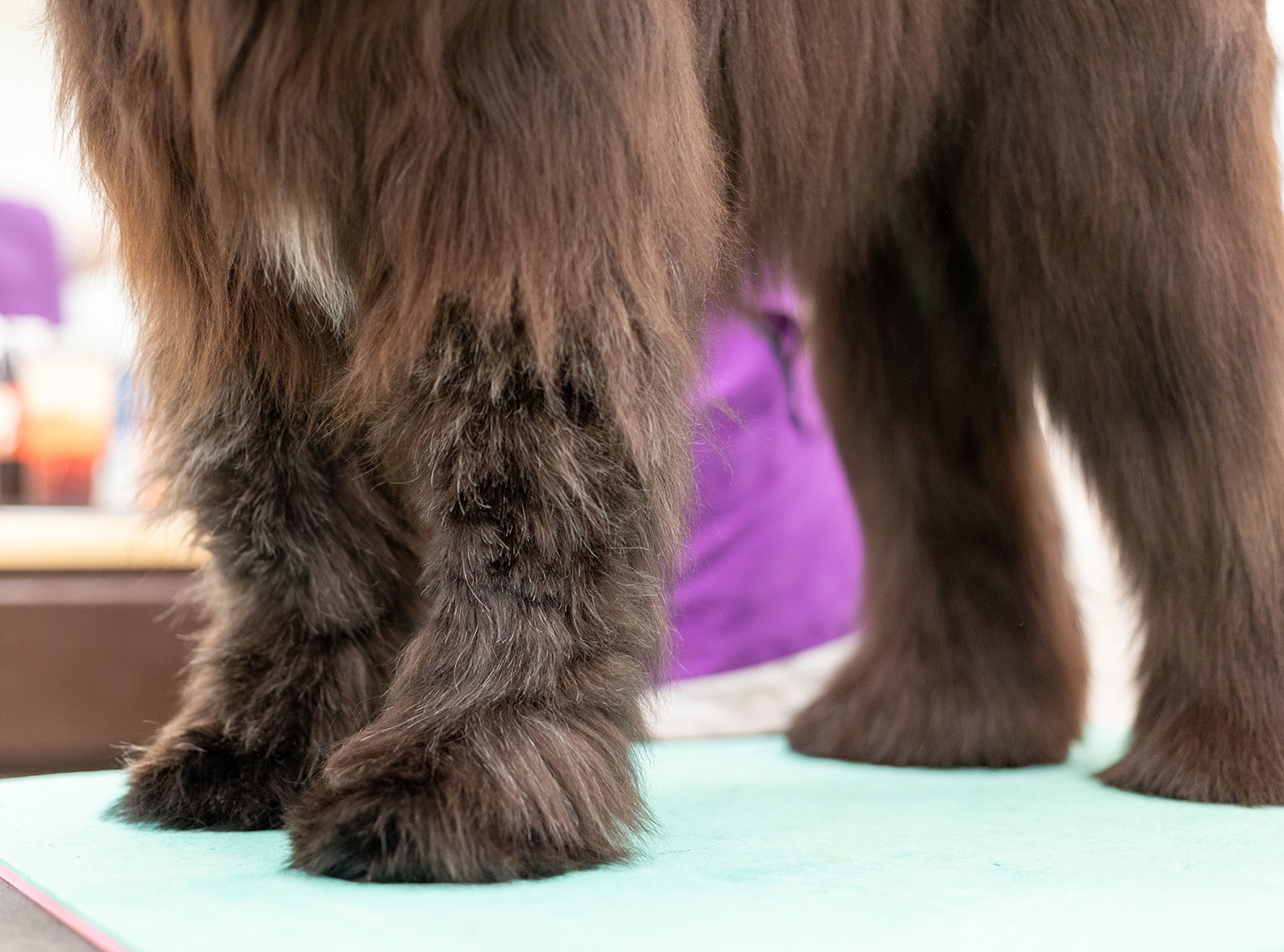Nearly all pet owners have seen their dog scratch, lick or chew a limb or other body part, and it’s completely natural. Your pet is seeking temporary relief from an issue they’re experiencing. When dogs constantly gnaw themselves, remove chunks of hair or chew themselves raw, however, they’re experiencing more than just a typical itch.
There are a number of possible explanations behind your dog’s excessive chewing behavior. Finding the root cause quickly is important so you can provide relief for your pet and prevent other problems that may occur from a continuation of these behaviors. If left untreated, excessive chewing can not only cause hair loss or breakage but can also damage the skin underneath as well.
This blog breaks down some of the reasons a dog might engage in destructive chewing behaviors along with what to try in order to remedy the situation.
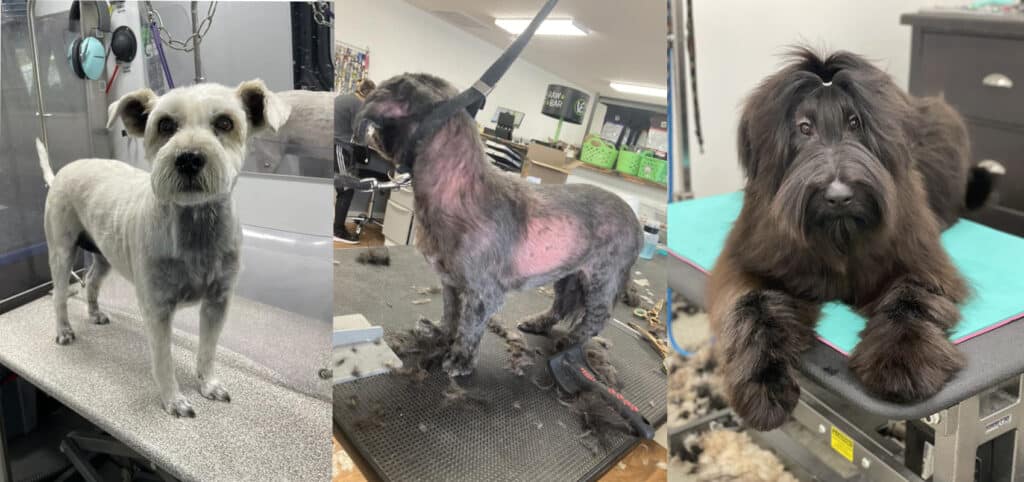
Dry, Itchy Skin
One reason may be due to dry, itchy skin. If a dog itches, they will try everything they can to scratch it and find some temporary relief, and may break or tear their hair in the process.
While dry, flaky skin is a common symptom of allergies, bites or skin diseases (more on this below), it’s most often not due to something serious. Like humans, many pets naturally get dry skin during cold, dry months over the winter and need a little extra conditioning to moisturize their sensitive skin cells.
Changing Your Pet’s Diet
One possible solution may involve changing what you feed your pet and ensuring your pet is eating high quality food. Fish-based diets are also a good option, as they are often recommended for itchy dogs due to their high levels of protein and fish oil. This benefits both their skin and coat (along with heart health benefits).
The American Kennel Club also suggests feeding your dog plain, sugar-free yogurt (1 tsp/week for small dogs, 2 tsp/week for large dogs) to help soothe your dog’s irritated skin.
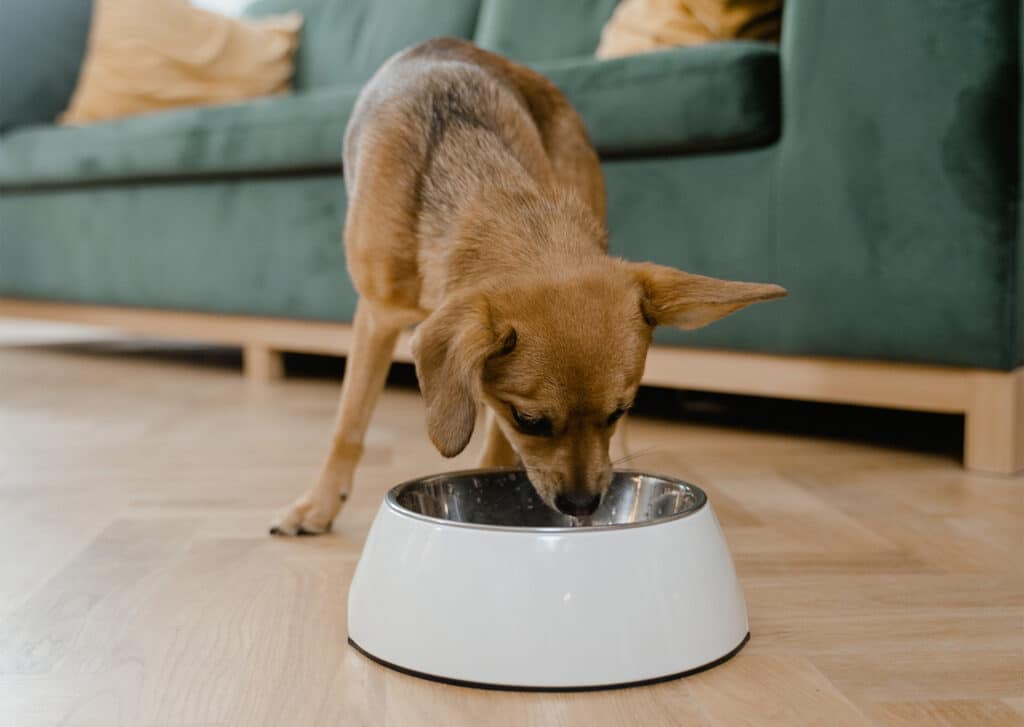
Specialty Dog Baths
Specialty baths are another avenue to try. At home, an oatmeal bath may naturally provide some relief. To do this, draw a warm bath with ground oats sprinkled in. Let your pet soak for 10-15 minutes.
We’ve also witnessed dramatic benefits from the Exfoliating Skin & Coat Detox service Smoochie Pooch provides for both dogs and cats. This treatment removes and lifts toxins, cleanses the skin and coat, and hydrates your sensitive pet by adding back oils, minerals, collagens and other nutrients utilizing Iv San Bernard’s specialty therapy products. Customers have raved that their pets ceased to scratch or chew their skin after this treatment with impressive testimonials.
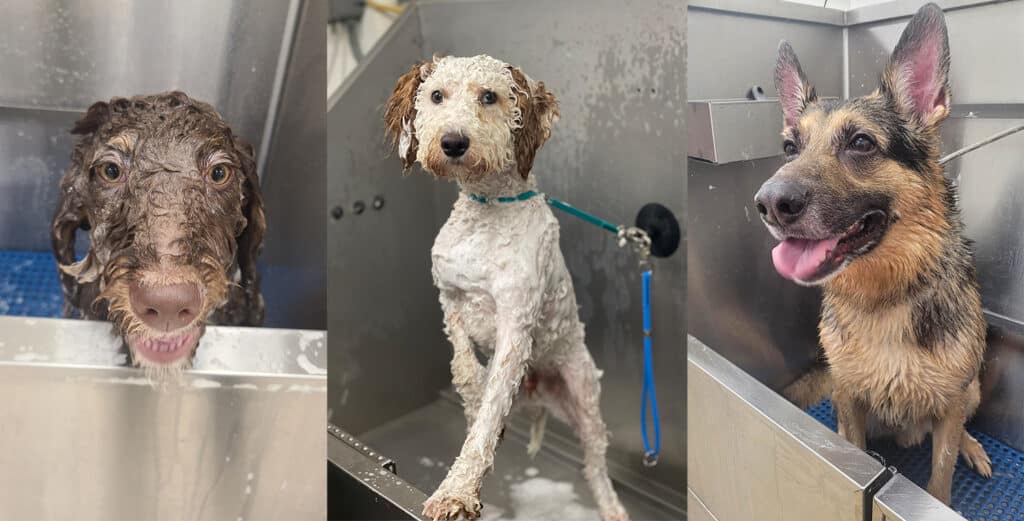
Topical Skin Care
Another natural and holistic approach involves coconut oil. It’s a popular supplement for humans and is often recommended by veterinarians for applying topically to dog skin. Choose unrefined (virgin) coconut oil and allow it to absorb for a few minutes before rinsing off your dog. If your pet still feels oily or greasy, follow with a light shampoo and rinse.
You can also create an oatmeal paste consisting of a half cup of oatmeal and a half cup of warm water to spread on your pet’s pinpointed sensitive skin areas. Cover the paste with a warm towel for 10 minutes before gently wiping off. Repeat up to three times a day.
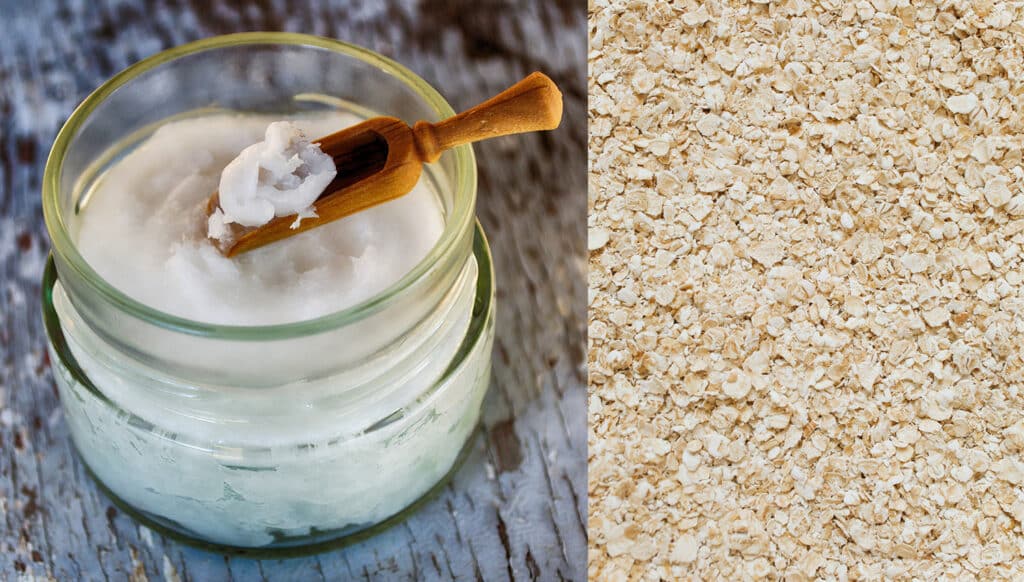
Hot Spots
Hot spots, also known as pyotraumatic dermatitis or acute moist dermatitis, are often triggered by scratching, licking or chewing the affected area and can result in skin inflammation and secondary bacterial infections. This can quickly turn into a self-perpetuating cycle of itching and scratching, so it’s important to quickly identify the underlying cause(s).
An underlying skin condition is generally to blame, though other possible causes include flea bite allergies, ear infections, yeast infections, seasonal allergies, improper grooming, anal gland impaction, or a slew of other problems.
Your first line of defense against hot spots involves preventative measures like proper hygiene and routine grooming. If you suspect your pet has hot spots, your veterinarian can recommend helpful options like clipping hair around the area to prevent matting, bathing with medicated dog shampoo, and other treatments.
Smoochie Pooch also offers free skin therapy consultations to review what we can and cannot do for your pet’s individual skin concerns and issues, including hot spots.
Boredom & Anxiety
Bored and anxious dogs can quickly become excessively destructive. When left to their own devices, they can be a handful; not only are they capable of destroying your home or possessions, but they may start chewing on themselves, wreaking havoc on their skin and coat.
The best way to curb boredom is to keep your pet stimulated. Physical exercise, mental stimulation, training and socialization are great places to start. Since most breeds have some sort of working heritage (think herding and hunting), giving your pet a job or hobby is also a great idea.
Try challenging toys, edible chews and stuffed Kongs. Hire a pet sitter or dog walker to entertain your pet while you’re away. Try fun indoor games with your dog on rainy days.

Flea Bite Allergy
Even the most diligent pet owners will likely encounter fleas at some point or another. Some dogs are extremely sensitive to fleas, and a single flea bite can lead to a downward spiral of licking and chewing, causing inflammation of the skin.
Flea and tick preventatives are great, though they do not actually prevent dogs from getting bit. Fleas need to not only bite the dog but also consume their blood for the preventative to work, as systemic flea preventatives work through a dog’s bloodstream.
If you suspect a flea bite allergy, avoid walking through areas that may be densely populated with dogs such as dog parks. Give Benadryl to your dog if a suspected bite has occurred, but only as recommended by your veterinarian.
Poor Grooming Regimen
Though important for a variety of reasons, one motivation to maintain a regular dog grooming regimen is to ensure your pet’s skin and coat are well taken care of. Matting can cause underlying skin problems for pets with long hair. If there are any tangles or matting, those matts can pull and tug at the skin causing extra discomfort.
Along with grooming your pet, your local pet groomer can also help you identify a variety of problems before they become severe. Many times, if there are any skin issues present, it can be hard to detect under all of your dog’s hair. Groomers use high-powered dryers that help separate the hair, allowing us to easily examine skin on the entire body.
Allergies
Allergies play a big role in the health of the skin. It can be difficult to diagnose what is causing allergies, so help from your veterinarian may be necessary. Depending on the severity of the allergies, your dog may need medical intervention. Whatever the cause may be, skin will be greatly affected.
Medication can help, but usually a topical treatment in conjunction with medication is best. Most groomers offer some type of medicated bath treatment or a soothing treatment for allergies. At Smoochie Pooch, we recommend our three-step Mineral Red Hydration treatment for both cats and dogs with allergies.
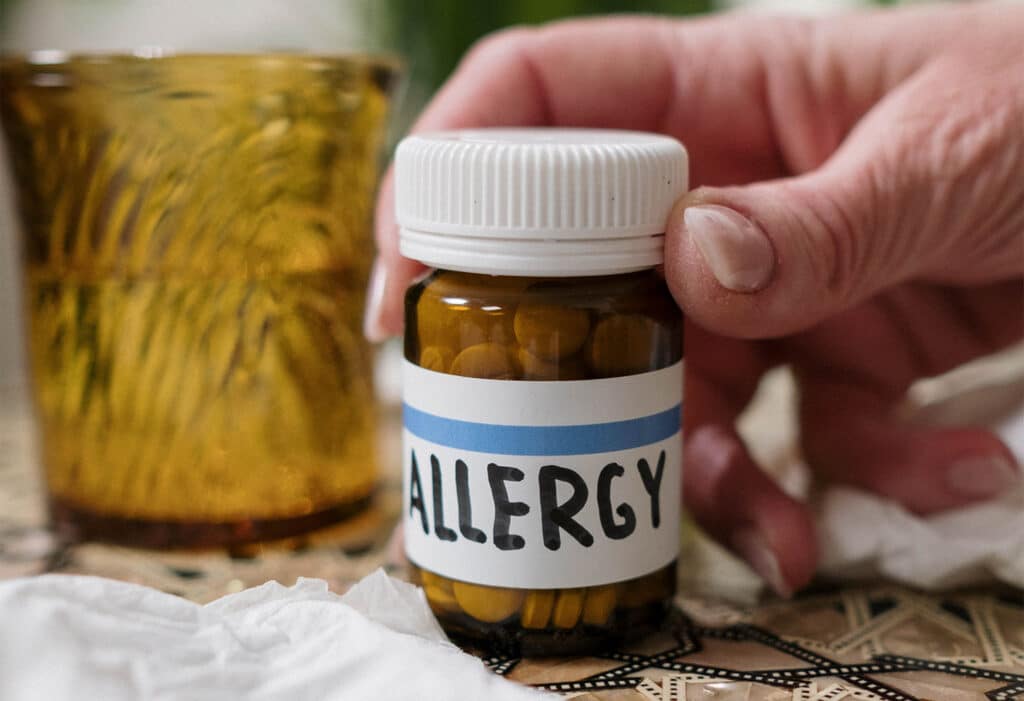
Solutions
Solving excessive scratching in dogs varies depending on the cause. Solutions range from home remedies to specially formulated dog baths to steroid prescriptions from your veterinarian.
The best advice we can give you is to stay on top of your pet’s health by feeding them a proper diet and maintaining a proper grooming routine – and that involves brushing in between visits to the groomer! See this article for how often we recommend professional grooming based on your breed.
We also recommend checking your pet’s skin condition from time to time so you’re better able to treat issues before they become severe. As mentioned earlier, your local dog groomer can help catch and sometimes diagnose a variety of skin issues during regular grooming visits.
Finally, consulting your vet is always a great option, depending on the severity of your dog’s condition. They may prescribe medication or specialized care to help resolve particular ailments, so make sure to contact them when you notice something’s wrong.


